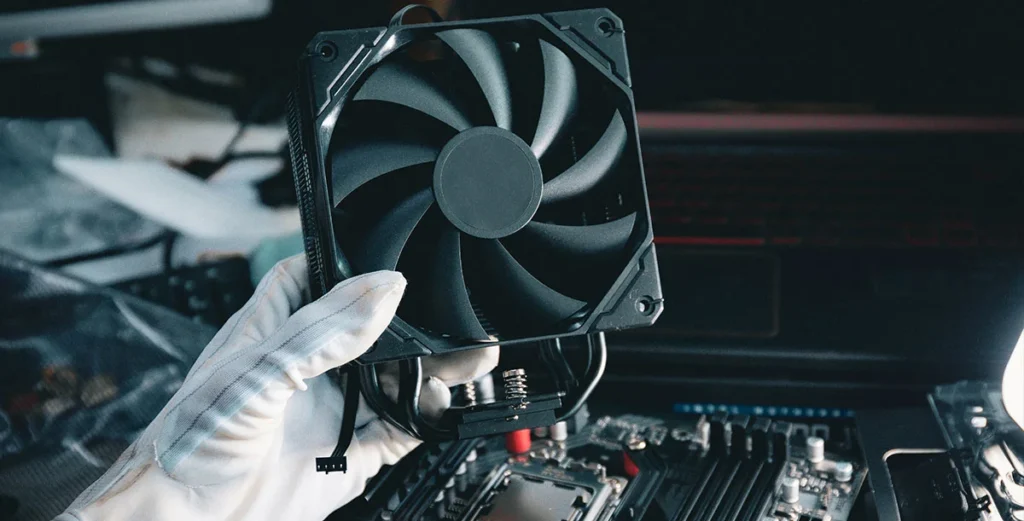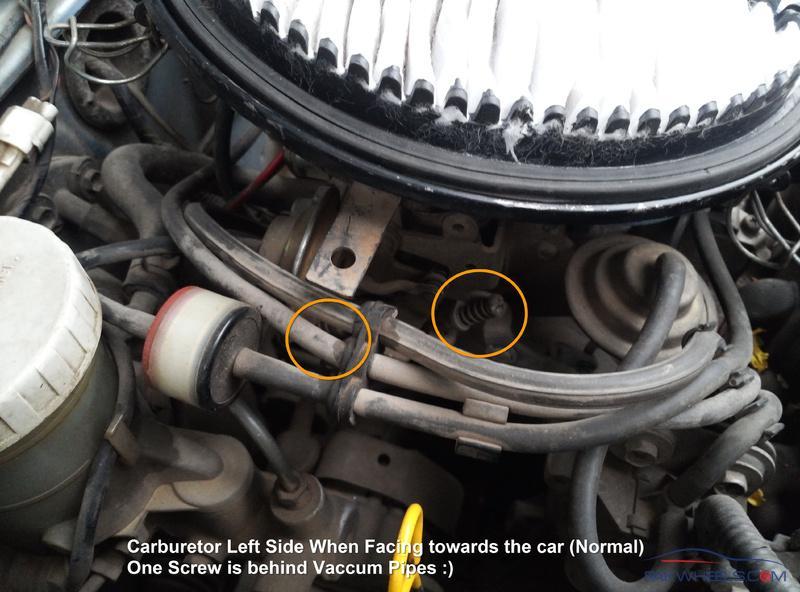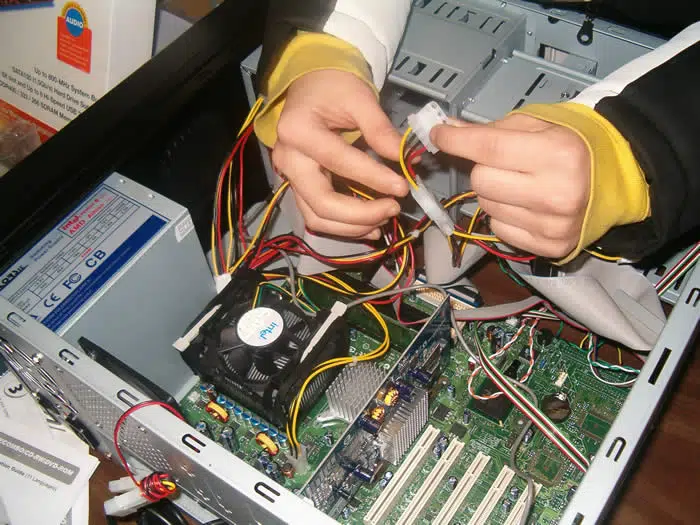This can be a bit worrying, especially if you’re not sure why it’s happening. A properly functioning CPU fan is crucial to keep your computer from overheating and ensure it runs smoothly. Let’s dig into the reasons behind this behavior and how you can fix it.
“Your CPU fan starts and stops because it adjusts its speed based on temperature. When the CPU gets hotter, the fan speeds up; when cooler, it slows down or stops.“
In this article we will discuss “why does my CPU fan start and stop”
Table of Contents
What is a CPU Fan?

A CPU fan is a small device inside your computer that keeps the central processing unit (CPU) cool. It works by blowing air over the CPU to dissipate heat generated during operation. This prevents overheating, which can damage the CPU and other components.
Normal Operation
Normal operation refers to the regular functioning of a device or system under typical conditions. For a CPU fan, this means turning on and off as needed to maintain optimal temperatures for the computer’s processor, ensuring efficient performance and longevity of the hardware.
Regular Cycling
Regular cycling means biking often, like riding a bicycle for exercise or fun several times a week. It’s good for your health and helps you stay fit.
Also Read: Intel Lga 1151 CPU List – Best Intel LGA 1151 Processors!
Temperature Regulation
Temperature regulation means your body’s way of keeping its temperature steady. It adjusts to changes in the environment so you stay comfortable. Sweating cools you down when it’s hot, while shivering warms you up when it’s cold
Thermoregulation Mechanism
Thermoregulation is your body’s way of keeping a steady temperature. When it’s hot, you sweat to cool down. When it’s cold, you shiver to warm up. This helps your body stay comfortable and work properly
Fan Speed Control
“Fan speed control” refers to adjusting how fast a fan spins. It helps manage temperature and noise levels in devices like computers. By regulating speed, users can balance cooling effectiveness with noise reduction, enhancing overall performance and comfort.
RPM Adjustment

“RPM adjustment” means changing how fast something rotates. It’s commonly used for adjusting fan speeds or controlling motorized devices. By altering RPM, users can manage performance, energy usage, and noise levels to suit specific needs, improving efficiency and comfort.
System Load Impact
“System load impact” refers to how much a task or process affects a computer’s performance. Higher impacts can slow down operations and increase resource use. Monitoring and managing these impacts help maintain smooth and efficient system operation.
High vs. Low Usage
“High vs. low usage” compares how intensively something is used. High usage means frequent or intensive use, while low usage indicates less frequent or lighter use. Understanding these levels helps optimize performance and resource allocation for better efficiency
Also Read: Can I Use Higher Frequency Ram Than CPU-Comprehensive Guide!
Power Management Settings
“Power management settings” control how devices use energy. They include options to conserve power by adjusting sleep modes, screen brightness, and CPU performance. Customizing these settings helps extend battery life on laptops and reduces electricity consumption for environmental and cost savings
BIOS Configuration
“BIOS configuration” involves adjusting settings in a computer’s basic input/output system. It controls hardware functions like boot order, memory settings, and device recognition. Proper configuration ensures stable system operation and allows customization for specific needs such as overclocking or security features.
Dust and Dirt Accumulation
“Dust and dirt accumulation” refers to the buildup of tiny particles on surfaces over time. In electronics, this can clog vents, fans, and components, causing overheating and performance issues. Regular cleaning prevents damage and helps maintain optimal device function and lifespan.
Cleaning Importance
“Cleaning importance” highlights the significance of regular maintenance to prevent dust and dirt buildup. It ensures devices run efficiently by reducing overheating risks and maintaining optimal
performance and longevity. Regular cleaning is essential for keeping equipment in good condition and avoiding potential malfunctions.
Hardware Issues

“Hardware issues” refer to problems with physical parts of a device or computer system. These issues can include malfunctions, damage, or failures of components like processors, memory, or storage devices. Resolving hardware issues often requires repairs or replacements to restore proper functionality
Software Monitoring Tools
“Software monitoring tools” are programs that track and analyze how software applications behave. They help detect issues like performance bottlenecks or crashes, monitor resource usage such as CPU and memory, and provide insights for optimizing efficiency and stability.
Diagnostic Utilities
“Diagnostic utilities” are tools used to identify problems with computers or software. They analyze issues such as hardware malfunctions or software errors, providing detailed reports to help users troubleshoot and fix problems effectively, ensuring smooth operation of devices and programs.
Also Read: Do I Need Two CPU Power Cables – A Complete Guide!
Environmental Factors
“Environmental factors” refer to conditions in surroundings that affect devices. Examples include temperature, humidity, and dust levels. These factors can impact device performance and longevity. Managing them effectively helps maintain optimal operation and prevents potential damage or malfunction.
Ambient Temperature
“Ambient temperature” refers to the temperature of the surrounding air or environment. It affects electronic devices because high temperatures can cause overheating and affect performance. Monitoring ambient temperature helps maintain safe operating conditions for equipment and prevents potential damage.
Upgrading Options
“Upgrading options” refer to choices for improving or enhancing a device or system. It includes upgrading hardware components like RAM or storage, or updating software to newer versions. Exploring these options can improve performance, add features, or extend the lifespan of the device.
Enhanced Cooling Solutions
“Enhanced Cooling Solutions” refers to better ways to keep things cool. It’s about finding more effective methods to lower temperatures. This can be important for everything from computers to buildings, making sure they stay at safe and efficient levels.
Maintenance Tips
“Maintenance Tips” are simple ways to keep things working well. These are helpful tricks to prevent problems and make sure everything stays in good condition. It’s like regular check-ups for machines or your home to avoid bigger issues later on.
Preventive Measures
“Preventive Measures” are actions taken to stop problems before they happen. These can include regular checks, using protective gear, or following safety rules. It’s like fixing a leaky roof before it causes damage, saving time and money in the long run.
FAQs
- Why does my CPU fan start and stop frequently?
Your CPU fan may start and stop frequently due to overheating or incorrect settings. Check if the fan is clean and working properly. Ensure your computer’s ventilation is adequate and that the fan settings in the BIOS are configured correctly to maintain stable cooling.
- Is it normal for a CPU fan to turn off completely?
It’s not normal for a CPU fan to turn off completely during operation. The fan helps cool the CPU to prevent overheating. If it stops, it could indicate a malfunction or that the CPU is not under load. Check fan settings and CPU temperature for proper operation.
- Can dust affect my CPU fan’s operation?
Yes, dust can affect your CPU fan’s operation by clogging its blades and reducing airflow. This can cause the fan to work harder or overheat, potentially leading to performance issues or damage. Regular cleaning helps maintain optimal cooling efficiency.
- How can I check if my CPU fan is working correctly?
You can check if your CPU fan is working correctly by visually inspecting it for dust or debris, ensuring it spins freely when your computer is on. Monitor your CPU temperature using software to ensure it stays within safe limits during heavy use.
- Should I upgrade my CPU cooling system if the fan starts and stops often?
Yes, you should consider upgrading your CPU cooling system if the fan starts and stops often. This can indicate inadequate cooling capacity or a malfunctioning fan. Upgrading can improve stability and prevent overheating issues, extending the life of your CPU.
Conclusion
In conclusion, your CPU fan starts and stops to keep your computer at the right temperature. Regular cleaning and checking settings can help it work properly. If problems continue, consider upgrading your cooling system. This will ensure your computer runs smoothly and lasts longer. Regular maintenance is key to preventing overheating and damage.

